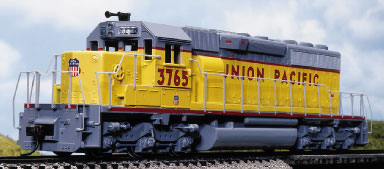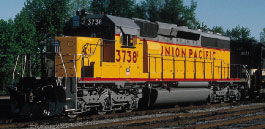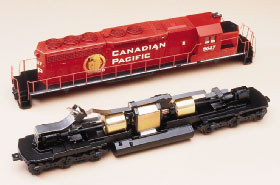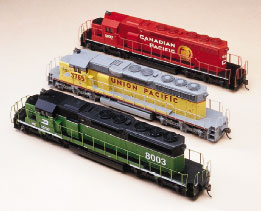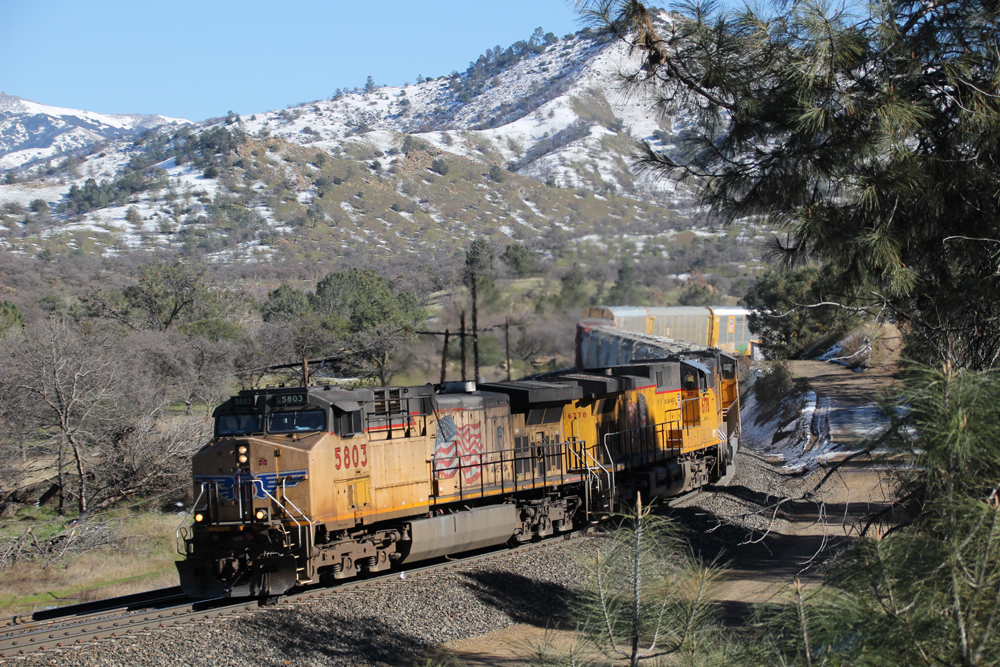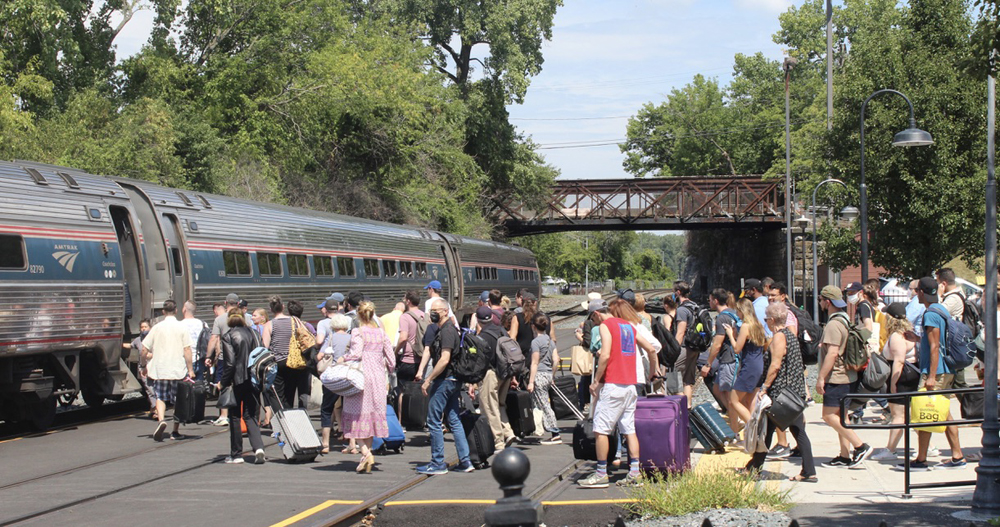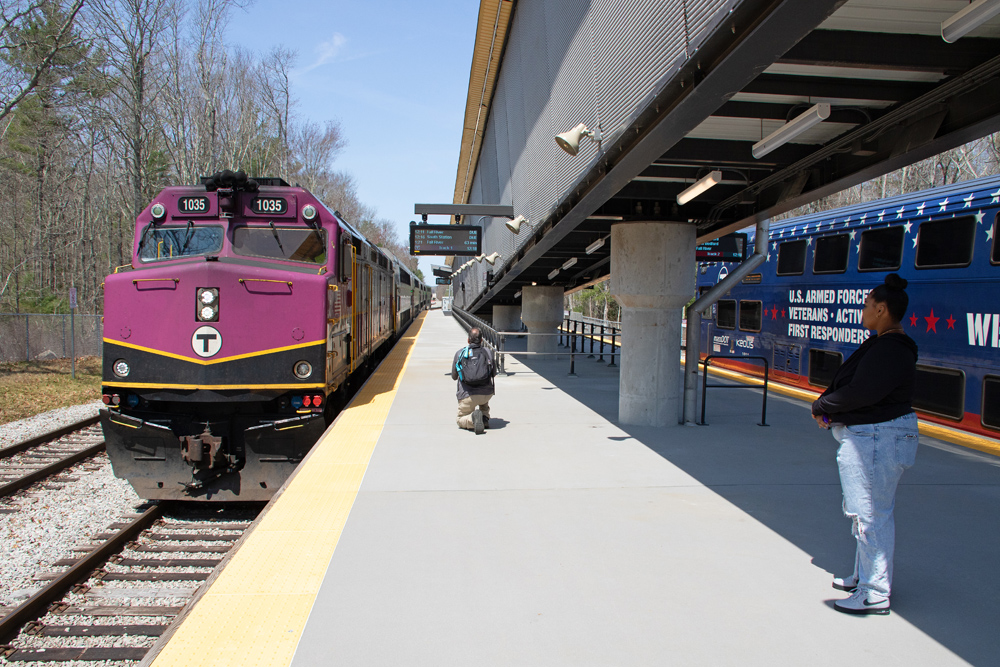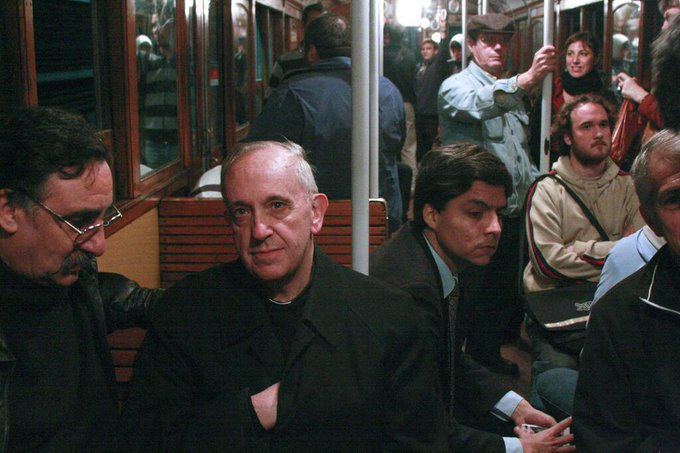Electro-Motive Division’s SD40-2, introduced in 1972 as an upgrade to the earlier SD40, became the most popular and widely used freight hauler of the last quarter of the 20th century because of several factors. Its size, weight, traction, and cost struck a good balance for everything from heavy drag freights to speed running on flat land.
Just how many SD40-2s were produced? You’ll see different numbers in different sources, but Trains magazine did a special EMD issue in September 1997 and cited the total production number at 3,945. Although the SD40-2 was last produced in February 1986, most are still in service today.
From a modeler’s perspective, the huge production numbers and widespread use of the prototype are both an opportunity and a headache. There are lots of variations.
Athearn has solved some of the headaches. It’s offering more than 20 road names now and intends to add more. Also offered are three different configurations of radiator intake screens, fans, and dynamic brake housings. The early version has so-called “chicken wire” radiator intake screens; the standard version has corrugated radiator intake grills, early 48″ radiator fans, and the standard dynamic brake housing and exhaust stack; and the post-1980 version has Q (quiet) fans and the extended dynamic brake and “silencer” exhaust stack. Athearn is matching the details to the road names and paint schemes of the models.
Out of the box, assembly is straightforward, requiring a minimum of tools. Clear headlights and number boards, as well as plastic brake cylinders, snubbers, and handrails, are all press-to-fit. The only tool you really need is a no. 71 drill to clear paint buildup from the stanchion mounting holes along the sides.
The best part of the new models are the plastic handrails. (Athearn still includes the older metal stanchions and handrails for anyone who might prefer them.) The new handrails are molded in color and close to scale size-about .020″ in diameter, which scales out to just under 1¾”. The stanchions are quite finely molded-you can detect the slightly flattened, “cupped” construction of the prototype stanchions.
The mechanism is Athearn’s standard five-pole double-ended open-frame motor with flywheels. All the sintered metal wheels are powered and pick up electricity, and running noise is on the quiet side of average. Bachmann E-Z Mate knuckle couplers in draft-gear boxes slide through the coupler-box openings and are screwed to the chassis; those wishing to convert to Kadee couplers will find the no. 5 fits. Coupler height is correct, and the wheels conform to the National Model Railroad Association standards gauge.
The engine is a good runner. Slow speed is fine, startup is fairly smooth, and the drawbar pull of nearly 5 ounces is good for approximately 69 cars on straight, level track.
The model conforms well to drawings of the prototype published in the July 1976 Model Railroader. The model has the scale 88″-long short hood used on mid- and late-production SD40-2s (the drawings show the earlier 81″ nose). Even the vent between the fan sets has the proper “T” profile when viewed from the side.
There were just a couple of minor problems with the models out of the box. The Union Pacific kit had one end handrail that fit and one that didn’t. It turned out that a handrail sprue from a snoot-nose kit had found its way into the wrong box. Also, the UP engine arrived with minor damage to the dynamic brake housing. Neither of these problems is likely to happen to you, but if they do, a hike back to the hobby shop or a call to Athearn would solve the problem.
Some details remain unchanged from Athearn’s earlier model. There’s no provision for a Digital Command Control decoder; the headlight is simply a bulb inside the cab; the fuel tank is still the traditional Athearn metal casting with minimal detail; and none of the models sport the anticlimber that was an option on the prototype as of 1973. Paint is generally very good, with good detail and a surprising number of nice prototypical touches such as engine water fill instruction lettering and “danger” and “fire extinguisher” labels, but a few stripes were subtly amiss and maybe a bit too much show-through was evident here and there.
So, generally, most aspects of the engine’s modeling and operation seem “very good” rather than “great.” But it’s also half the cost of its main competition. Athearn has provided a well-made, detailed, accurate, affordable, and good-performing HO model of this ubiquitous prototype with a useful range of fan, grill, and brake variations.
Athearn’s new model, with its improved detailing, captures the long, lean character of the original very nicely.
Price: $44.50
Manufacturer:
Athearn Inc.
19010 Laurel Park Rd.
Compton, CA 90220
www.athearn.com
Description:
Plastic and metal ready-to-run locomotive
Features:
Drawbar pull: 4.96 ounces
Engine weight: 15.5 ounces
Minimum radius: 18″
Road names:
Atchison, Topeka & Santa Fe (two body styles)
Burlington Northern (two body styles)
Burlington Northern Santa Fe
Canadian Pacific (beaver)
Canadian National (North America)
Chessie System (Baltimore & Ohio)
Chicago & North Western (Operation Lifesaver)
Conrail (blue and Quality schemes)
CP Rail (flags)
CSX (two body styles)
EMD Leasing
Grand Trunk Western
Illinois Central
Kansas City Southern (gray or white)
Louisville & Nashville
Missouri Pacific
Montana Rail Link
Norfolk Southern (two body styles)
Rock Island (red)
Soo Line (red and white schemes)
Transportacion Ferroviaria
Mexicana (gray, two body styles)
Union Pacific (two body styles)
Undecorated





